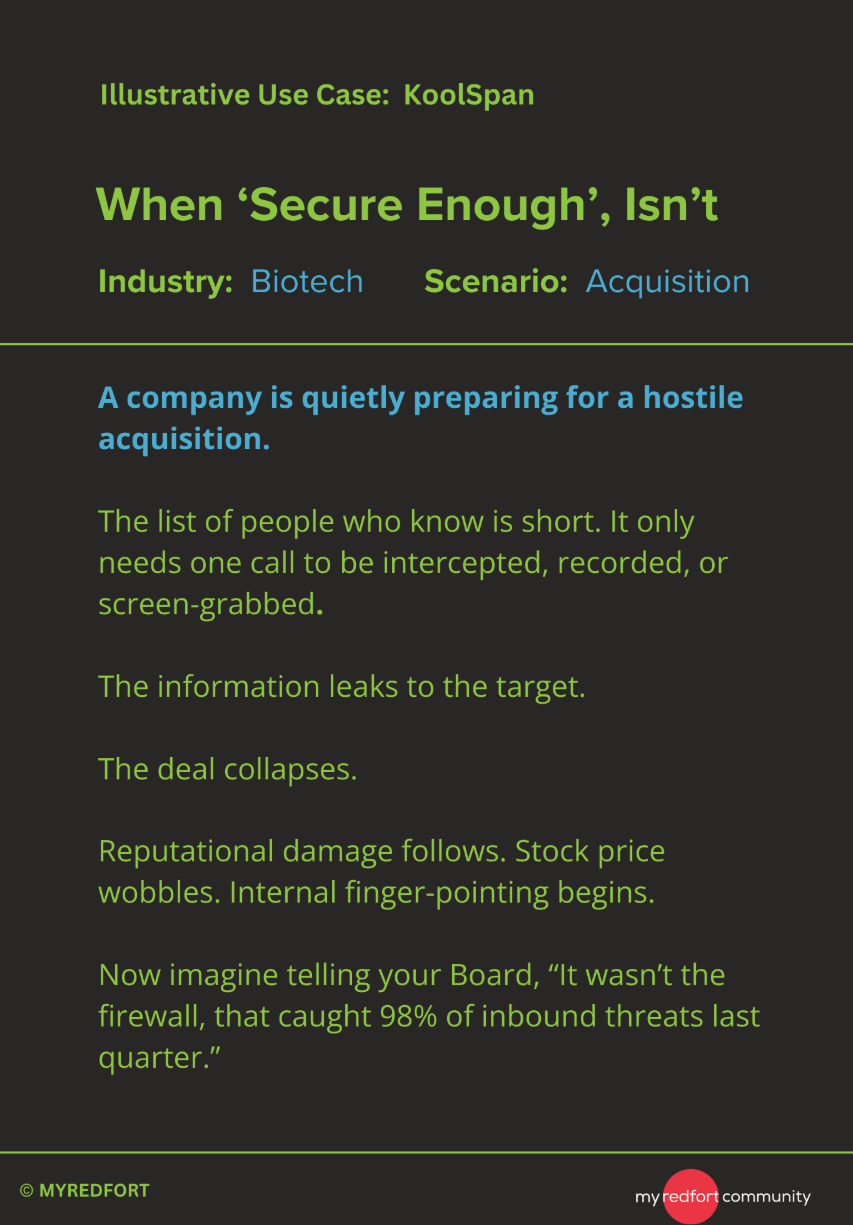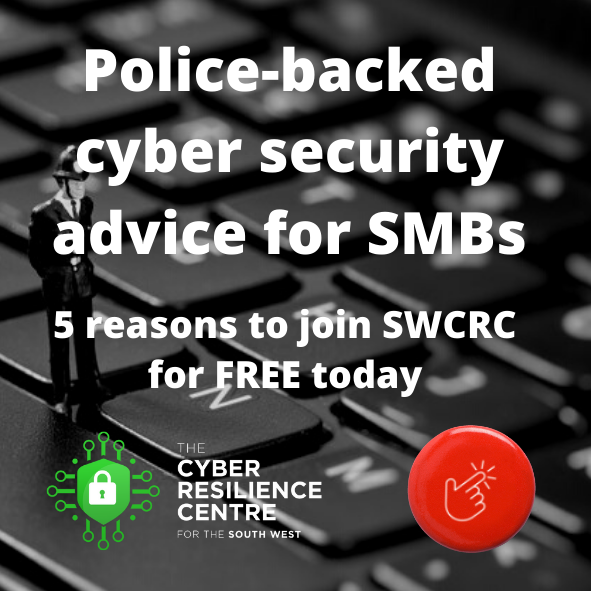Most large organisations today will proudly tell you they’ve 'invested heavily in cybersecurity.'
They’ll reference ISO standards, endpoint protection, firewalls, SIEM dashboards, and that quarterly phishing simulation they rolled out to staff.
All of this is, of course, essential. And all of it is missing the point in situations where the utmost secrecy, not just security, is the goal. When you look at how real-world breaches happen in moments of high sensitivity, like a merger negotiation, a crisis response, or a political engagement, it’s rarely the firewall that failed. It's the conversation that leaked, the message that was forwarded, the screen snapped, or the mobile call made from a hotel lobby on a consumer app.
That’s where the risk lies. And it’s why 'standard cybersecurity' quietly falls apart in moments where one leak equals total failure.
The core assumption: Trusting the device
Most corporate cybersecurity is built on the assumption that devices are trusted or at least managed well enough to remain safe. Mobile device management (MDM) platforms, antivirus apps, and VPNs all rest on that foundation. But in reality, the people who matter most – the senior execs, legal teams, dealmakers - routinely operate outside of those frameworks.
They work from planes, hotels, cafés, and boardrooms. They use personal devices. They message through platforms like WhatsApp or Signal. In many cases, they communicate in ways that are completely invisible to IT — and unprotected against surveillance-grade threats or insider compromise.
In standard business environments, that’s a governance issue. In a high-secrecy situation, it’s a show stopper. These situations don’t call for standard security. They call for absolute containment. No leaks. No metadata exposure. No possibility of interception — even if the network, device, or user is compromised. That’s a much higher bar than most cybersecurity programs are built for.
Where standard tools fall short
Here’s what your typical corporate security stack can’t do when secrecy is paramount:
- Stop voice surveillance: Mobile calls on public networks can be intercepted. Encrypted apps don’t encrypt calls at the device level — and most are vulnerable to OS-level spyware.
- Control mobile messaging: Signal and WhatsApp are encrypted, but they still rely on cloud messaging, and users can forward, screenshot, and export data. There’s no admin oversight. No way to recall.
- Prevent insider leaks: If a board member records a call or screen-snaps a sensitive message, no firewall or EDR will catch it.
- Avoid metadata exposure: Even secure apps leak who talked to who, when, and how often, which is a goldmine for competitors or hostile actors watching the shadows.
- Operate outside your control: Execs, advisors, partners, many of them operate beyond corporate device policies. Especially in high-stakes deals, legal wranglings, or political engagement.
In short, your standard security tools protect the walls. But in high-secrecy situations, it’s what happens inside the walls that matters most.
What does 'secrecy-grade' look like?
Security that works in these environments must be built for isolation and trusted groups, not just protection. That means:
- Device-to-device encryption, not just end-to-end, but no cloud relays, no middlemen, no chance of interception.
- Closed communication ecosystems where only trusted, pre-approved users can speak with each other. No outside noise, no risk of misrouting.
- Policy-enforced controls disabling copy/paste, screenshots, and message forwarding. Security that isn’t optional.
- Ephemeral messaging - auto-delete, no message storage, and full control over data retention.
- Deployment flexibility - the ability to run outside of the public cloud, on-prem, or in isolated networks. This isn’t overkill. It’s the baseline for situations where one exposed message can destroy an entire initiative.
But is this paranoia?
Only if you assume you're not being watched.
History is filled with examples where espionage didn’t mean breaking through firewalls — it meant overhearing a call, accessing a misplaced device, or persuading someone to share a screen.
The tools available to sophisticated actors today — whether state-sponsored or corporate — make it trivial to capture mobile content once a device is compromised. Pegasus proved it. Insider recruitment in the tech world shows it’s happening right now.
So no, it’s not paranoia. It’s pattern recognition.
Final observation
Most organisations think of cybersecurity as a fortress. But in the high-secrecy world, the fortress is only as good as the privacy of the conversations happening inside it. Standard tools keep the general threats out. But if your conversations can be intercepted, recorded, or replayed later, your security posture is already broken.
In those moments, you don’t need 'secure enough'. You need silent, invisible, untouchable. And most enterprise stacks aren’t built for that.
Example use case
Imagine a scenario where your company is quietly preparing for a hostile acquisition. The list of people who know is short. It only needs one call to be intercepted, recorded, or screen-grabbed.
The information leaks to the target. The deal collapses. Reputational damage follows. Stock price wobbles. Internal finger-pointing begins.
Now imagine telling your board, “Don’t worry, our firewall caught 98% of inbound threats last quarter.” It won’t land. That's the moment when “secure enough”, isn’t.
More in KoolSpan
What it means to truly control access.
Why People-Driven Mistakes Are a Serious Matter
Securing data beyond the basics.
Some of the biggest threats to your organisation’s sensitive data come from within.
Threats don't just come from the outside.
Protect your data in KoolSpan Trust Circles
How unsecured communication can derail reputations and market stability
Who's our leak?
Could it be you in the team working on a sensitive business project
Why privacy should be everyone's concern.
Share this story















